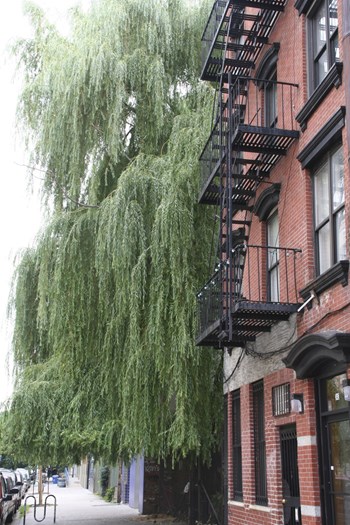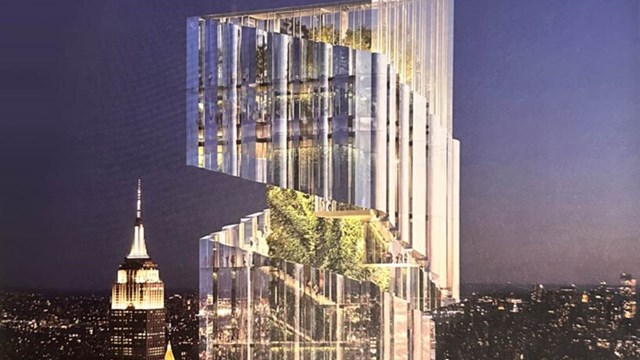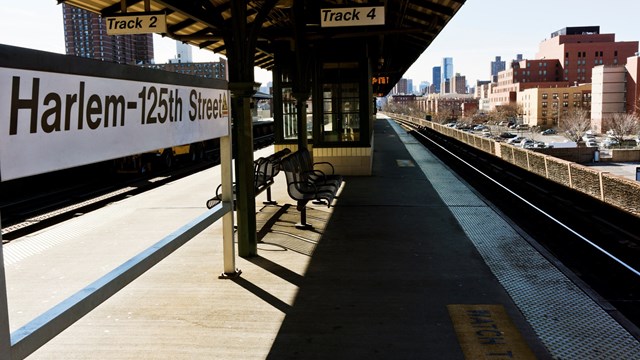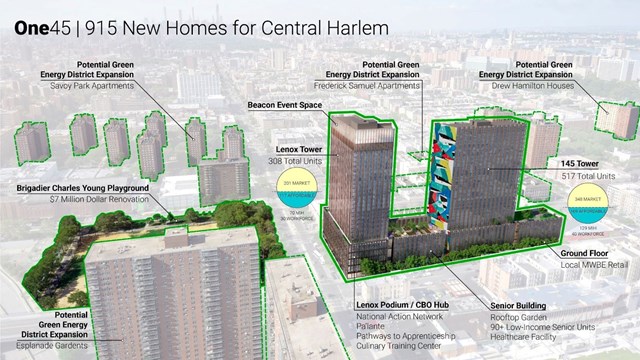
While the grid of streets and avenues may remain rigid and unchanging as the years go by, New York City’s neighborhoods are organic entities, constantly shifting and evolving as new features emerge and old ones fade away. Nowhere is this perpetual reinvention more evident than in Manhattan’s East Village.
Bordered by Houston Street to the south, Third Avenue and/or the Bowery to the west, the East River to the east, and 14th Street to the north, the East Village was originally considered—and still is, by some—to be part of the Lower East Side. Some native residents still proudly claim Alphabet City as their home turf, and in the parlance of real estate brokers and retailers, other parts now fall under the name NoHo.
Whatever the name, the East Village has become synonymous with artists, dive bars, indie boutiques, sidewalk cafes, and a louche hipster aesthetic that has managed—in some ways, at least—to resist much of the homogenization afflicting the rest of Manhattan, though now even that is changing.
Village Beginnings
Prior to the founding of New Amsterdam by Dutch traders in the 1600s, the part of Manhattan that would eventually become the East Village was an expanse of swampy marshland crisscrossed with Native American paths and game trails. (Many of these were made permanent thoroughfares—including the largest, which became the Bowery.)
Most of what became the East Village was originally part of a sprawling farm owned by Peter Stuyvesant, the last Dutch governor of New Amsterdam. The area began to change from pastoral countryside to status address when Americanized fur-baron-turned-real-estate-mogul John Jacob Astor set himself up in luxurious style near what is now called Astor Place. According to the East Village Visitor Center, “By the 1830s, [Astor] was selling real estate in the Astor Place area to some of the wealthiest politicians, merchants and industrialists of the era, including Vanderbilt, Delano and Gardiner. It became one of the most fashionable addresses in America.”
Eventually however, successive waves of poorer immigrants from Europe—particularly Eastern Europe, and especially Germany—made the area less appealing to society types. According to Visitor Center literature, “Many local estate owners started selling off their lots to tenement developers, and the area’s working-class roots began to take hold.”
“Working class” might have been something of a euphemism in those days. By the time the Civil War ended, the entire area from Houston to 14th Street was a teeming slum, populated with thousands of families crammed into airless tenement buildings and working punishing hours under miserable conditions in nearby garment factories, slaughterhouses, and tanneries.
Protests and Punk Rock
In fact, it was the slums and inhumane working conditions imposed upon the residents of the East Village in the late 19th century that first established the neighborhood as a staging ground for grassroots social movements. Since the 1850s, residents have gathered (and occasionally rioted) in and around Tompkins Square Park to strike back against hunger, unemployment, the draft, the government, various wars, curfews, and other social injustices. Police have been regularly dispatched—with varying levels of success—to break up angry mobs and protests in the park and surrounding streets.
The East Village’s reputation as a haven for counterculture has also drawn some of the most influential artists, musicians, and writers of their respective generations to the neighborhood, including W.H. Auden, Allan Ginsberg, Keith Haring, Madonna, Charlie Parker, Lou Reed, and Andy Warhol, just to name a few. According to the Visitor Center, in the early 1950s, the East Village was home base of the Beat poet-writers—Ginsberg, Jack Kerouac, and William S. Burroughs, among others—as well as the emerging abstract expressionism school of painting and visual art.
In addition to literature and art, music has long been a major export of the East Village. During the recession-blighted days of the 1970s and 80s, the neighborhood’s crumbling buildings offered emerging artists cheap space to create and perform. Some legit venues, such as the legendary rock club CBGB & OMFUG on the Bowery, became world-renowned landmarks. The neighborhood is widely regarded as a cradle of the East Coast punk-rock culture of the late 1970s, and of New Wave in the ‘80s. Local groups like Blondie and the Velvet Underground changed the face of pop music, and even Madonna got her start here, working as a coat-check girl at the Pyramid Club on Avenue A in the early 1980s.
Today, the last echoes of the punk scene are to be found on just a few blocks of St. Marks Place, where groups of post-punk kids, nostalgic for an era that ended before they were born, congregate on stoops and in down-market tattoo shops, eyeing the tourists with disdain. Some of the original punk ethos prevails in the handful of communal squats still hanging on in the neighborhood’s few abandoned buildings, but these have dwindled as the real estate boom has consumed every square-foot of undeveloped ground.
Cultural Crossroads
Throughout its history, the East Village has been home to an ever-shifting cast of residents: Germans and Irish in the early 1900s, Eastern European Jews and Ukrainians after that, then an influx of Puerto Ricans in the latter half of the 20th century. In between, millions of people from every corner of the world and every socioeconomic niche have come and gone.
Most recently, gentrification has altered the face of the neighborhood almost beyond recognition as the gritty, hardscrabble place it once was. The Wall Street glory days of the early-to-mid 2000s affected the area profoundly, according to Don Ortiz, a vice president with Prudential Douglas Elliman, who specializes in East Village properties. “The East Village boom was a natural extension of the [West] Village boom. It brought in a lot of young professionals and families.”
As the neighborhood evolved, Ortiz continues, “Originally, the typical [apartment buyer’s] profile was a young freelancer—many of them were renters who moved to the neighborhood because of relatively inexpensive housing stock. The charm of old New York wasn’t lost in the East Village. There was a very much established restaurant scene in the area, and people liked the fact that there was a neighborhood feel to it without the typical big box retailers very common in most Manhattan neighborhoods. Once there, they chose to buy as their incomes were established.”
Today, brand-new, glass-walled condos have been shoehorned in among the old tenements, and an apartment that might have rented in the mid-1970s or early ‘80s for $250 a month or less goes for something closer to $1,250—and often much higher. According to Ortiz, one-bedroom apartments in doorman buildings can sell for $600,000 on average. A two-bedroom apartment on a tree-lined block of East 10th Street across from Tompkins Square Park could easily sell for over $1 million, much to the amusement (or chagrin) of the old-timers.
And new developments continue to sprout, despite the current recession—albeit with a distinctive East Village twist. For his part, Ortiz says he’s excited about new buildings like 311 East 11th Street, which is being built from the ground up with green technology and environmentally-friendly materials. “There is more and more landmarking in the area,” Ortiz says, “and there has also been a big push to continue the fight against the ‘upzoning’ of the neighborhood, and to preserve its low-density atmosphere” by limiting the number of stories allowed to new buildings.
While some lifelong residents grumble about—and occasionally protest outright—the development of the East Village, some improvements cannot be denied. Elin Wilder is a native New Yorker who moved to the neighborhood in 1976—lured by the lifestyle she saw reflected in the pages of Punk magazine. Having witnessed the East Village at some of its lowest ebbs, she’s not necessarily anti-gentrification.
“One of the pros [of gentrification] is that the police department actually shows up when you call them,” says Wilder dryly. “They used to be more ‘selective’ about which calls they answered.”
Tompkins Square Park, once nearly bulldozed by the city for being a crime-ridden urban nightmare, is now the focal point of the neighborhood. Today it includes a children’s wading pool, a performance space, lawns for sunbathing, and the first official dog run in the city, complete with different sections for big and little dogs.
“Everyone owes a big thanks to Harry Greenberg [the official “Keeper of the Park”…Editor’s note] and the Parks Department for their ongoing support and continued upgrading of Tompkins Square Park,” says Wilder. “It’s a far cry from the needle park shantytown it once was—and we all need to do what we can to make sure it stays that way.”
Tompkins Square isn’t the only green space in the neighborhood—the abandoned lots that once were home to weeds, crack vials and other signs of blight have largely been converted into lush, thriving community gardens—more than 50 of them at last count. Maintained by volunteer gardeners and nearly all open to the public, the gardens vary from whimsical, child-friendly spaces to gracious, meticulously tended urban oases, and all are protected from development by the city’s Community Garden Trust. The trust was established purely to preserve and protect New York City’s 650-plus community gardens, and the gardens in the East Village are some of the city’s most beautiful and beloved.
The Future
But upgrades aside, few would argue that the East Village is not quite the place it once was. Today, St. Marks Place is a hodgepodge of Japanese noodle shops and cheap souvenir vendors. Legendary clubs like the Electric Circus and the Saint are long gone, their footprints now occupied by chain hair salons and bank branches. The Beat poets are extinct—replaced by well-scrubbed young professionals with baby carriages and small dogs.
“We’ve lost so many local businesses and community members who simply couldn’t afford to stay,” says Wilder. “Just think, the Filmore East is now a bank, the Second Avenue Deli is now a bank, our favorite midnight knish place is now a bank—there definitely seems to be a pattern emerging!”
“I really miss seeing the drag queens at the Second Avenue laundromat on Sunday mornings,” Wilder continues. “You’d be there, hung over in dark glasses and they’d be dressed like they were ready for their close-ups! It was like a fashion show every single weekend. And CBGB’s the night of the ‘77 blackout—thank god for Hilly! [Kristal, the late owner of the bar.] It was wild in the streets that night, and when most places were shutting locals out, he let us come in and spend the night. He was a really great guy.”
CBGB closed in October of 2006, and Hilly Kristal died in August of 2007. Shortly after his passing, the space that housed his legendary venue was gut renovated and is now a John Varvatos clothing store. While it’s foolish to romanticize rampant poverty, burned-out buildings, and unchecked crime, not all the changes in the neighborhood necessarily feel like improvements. Many New Yorkers (including this reporter) feel a great sense of nostalgia for the East Village of the past, where artists, musicians and writers could afford to live and work, enriching the cultural fabric of the entire city.
“Some of the people who have moved in over the past few years can be exasperating,” says Wilder. “They’re kind of like urban locusts—they seem to destroy all the things that made the area special. They often don’t support local businesses, preferring Starbucks to the local coffee shop, or they don’t make the connection between ordering from Fresh Direct and the loss of a corner bodega. Local residents fought to make this area both cool and livable—and it won’t stay that way without sustained effort.”
Hannah Fons is associate editor of The Cooperator—and a resident of the East Village.






Leave a Comment